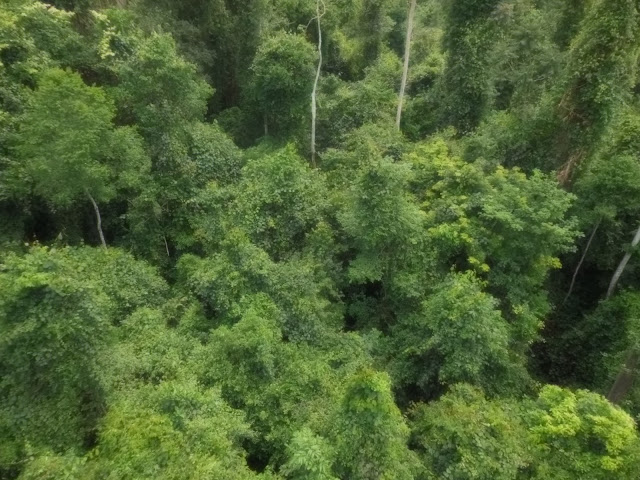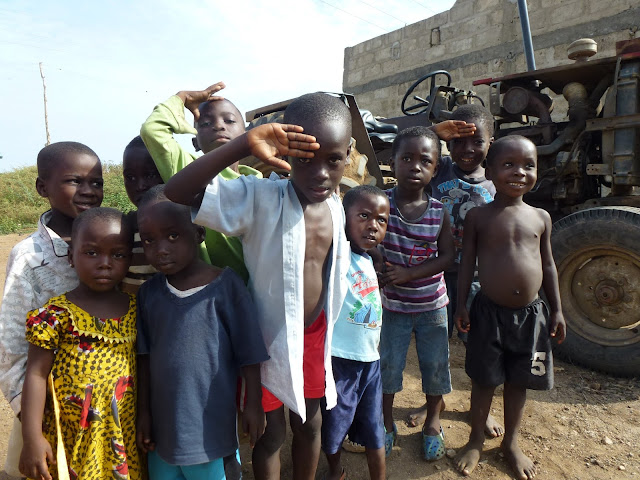 |
Welcome |
Sorry that it has taken me so long to update the blog - but it truly has been a busy couple of months. Many of you know that the Africa West Area has been growing and changing. Elder John B. Dickson and Elder Joseph W. Sitati are leaving this Area on August 1st. They will then be replaced with LeGrand Curtis, Jr. as President, Elder Dube from Zimbaway and Elder Vinson from Australia.
We are also loosing many couples. So I will begin with the going away party that we had for everyone. When a person leaves the mission they are presented with a Kente Cloth- it is a four inch woven banner with your name on it.
 |
| These were the Kente Cloths that were presented |
 |
| The Sitati's and the Dickson's after they received their Kente Cloth from Elder Curtis |
This event was held on Monday evening and then there was a special devotional for them on Friday evening. All of the Stakes in the Accra area came. They had two choirs, one of the Choirs is called the Winneba Youth Choir, they are extremely good and they are not members of the church. They presented the Dickson's and the Sitati's with several gifts. It was quite the occasion.
The Cocoa Plantation
We went with Elder & Sister Elmer to visit a Cocoa Plantation that was near Aburi, in a small town named Mampong. It was the first cocoa farm in Ghana. It is called the Tetteh Quarshie farm. It was a very interesting visit. The Cocoa Bean was brought to Ghana or the Gold Coast in the 1850's. Ghana is one of the largest producers of Chocolate. However, they do not make chocolate, they just export it. We enjoyed seeing how it grows.
 |
| This was our Guide - We had to wait for him to unlock the gate and let us in. |
They are Dressed for the Funeral
This is a Tribal Dress for the Funeral
 |
| This is Dr. Elmer and Kent holding a Cocoa Pod |
 |
| This is the beginning of the Cocoa Pod growing on the tree |
 |
| When it is large enough they cut it open and it looks like this - white and they break it apart - you can suck one of the pieces, it is quite sweet. |
 |
| They break the white apart to get the seeds - then place them on leaves to dry |
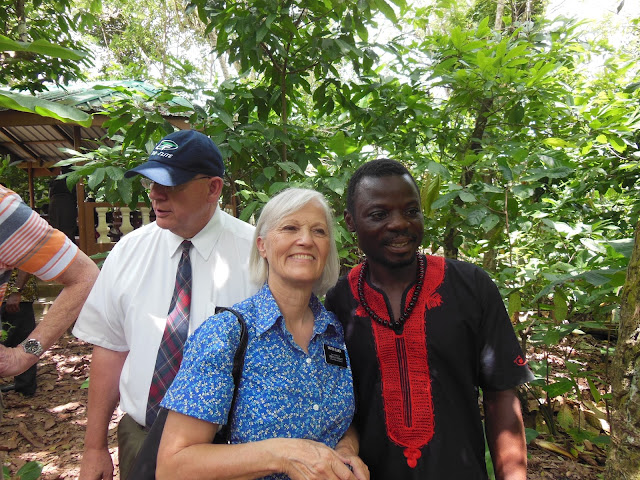 |
| We had a really fun day and it was very interesting. They then export the seeds to be made into chocolate! |
 |
| Just like everywhere in the world - the kids are so cute! |
Yes! - We finally made it to Cape Coast. This is suppose to be the resort area of Ghana. It was really a treat to get out of Accra. Cape Coast is about 174 Kilometers from Accra. It sits right on the ocean and is very tropical. We went with the Elmer's and stayed for a couple of days. Our first stop was at the one of our chapels. It was really nice and clean and the setting is beautiful, since it was right across the street from the Ocean.
 |
| This is Kent in front of the chapel - some of the missionaries were having a meeting, so we went in the building. |
 |
| This was the view from the chapel - we parked and ate our lunch here. It was truly beautiful, you almost forgot you were in Africa |
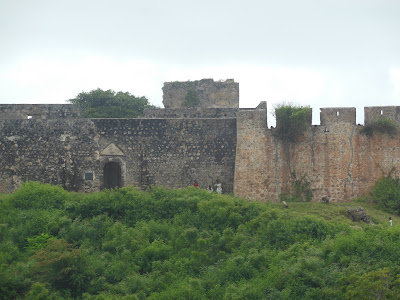 |
| There are several castles in Cape Coast, we could see this one as we were driving to the Cape Coast Castle |
The Cape Coast Castle is a World Heritage Site. It is reputed to have been one o the largest slave-holding sites in the world during the colonial era, where Ghanaians were traded to the British by Ashantes in return for alcohol and guns. It is very large, white and sits right on the water.
You buy your ticket and then enter into a large courtyard and you are surrounded on four sides by large walls and buildings. In the courtyard are cannons and balls.
The guide then takes you into some of the slave rooms and the auction room.
The rooms are dark, with no ventilation and you can only imagine how awful they would be when several hundred people occupied them.
Each Castle has a door, called the door of no return. When you go through the door you are on the beach. They then loaded you into small boats that would row you out to the larger ship, waiting to take you to a foreign land. Leaving behind everything that was familiar.
This was the site, when you opened the door.
This was Dad and Dr. Elmer looking out to Sea. It really was very interesting.
 |
| They showed you through several rooms inside the castle - in this one they were selling Art.
I thought this was pretty cool!!
|
The castle has dungeons, ramps and stairs and parapets. After Cape Coast was captured by the British in 1665, the fort was expanded to be comparable in size and strength with the nearby Dutch Fort at Elmina and in the 1680's the slave dungeons were constructed in such a way that they were accessible only from the seaward side of the Fort. There are four buried in the courtyard of the castle.
After spending time at the Castle we drove further down the cape to the place that we were staying. There are two places that are worth staying at - one is called Coconut Grove Beach Resort, which has a golf course and the Elmina Beach Resort. We stayed at the Elmina Beach Resort.
This was where you checked in
 |
| It has a very nice pool, which we enjoyed! |
This castle looks down on the village of Elmina. The bridge that you see is a draw bridge.
The following pictures were taken on the way back to Accra. I want to know if any of you can guess what the man is holding?? Who can be the first to tell me? It is considered very special to put in you soup and eat it. They sell them along the roadside.
Sorry it is sideways - I couldn't turn it.
Below was a truck delivering watermelons, check out the weaving on the sides of the truck to keep the watermelons from falling out.
We also passed a few housing projects that I thought you might like to see and the water pump.
 |
| Modern duplex! |
Who can spot the walking stick?
 |
| Some villages have a pump! |
Going to the Farm
On Saturday morning the Klein's who are humanitarian and welfare missionaries called and asked if we would like to go to the Farm with them. They have been helping the church with a farming project. Trying to teach members how to plant and maintain their crops. It has not been all that successful and the church is now changing and wanting them to plant small areas not acres. This was a very interesting day. The Farm is out in the middle of nowhere - you have to go down a long bumpy unpaved road and through a river to get to it.
Going down the road, the first place we came to was a Quarry of Granite. All of these piles of rocks was done by women, who sit all day and break the rocks and put them into piles.
This was a small village that we passed. Check out the grass roofs.
 |
| This tall building on poles is how they dry their crops. They put corn on the floor and build a fire below to dry it out. |
The kids always come to wave at you.
After crossing the river - we came to the farm.
 |
| Out standing in the corn field! |
 |
| Mostly they grow corn |
 |
| We saw this amazing Red Bird |
 |
| yams |
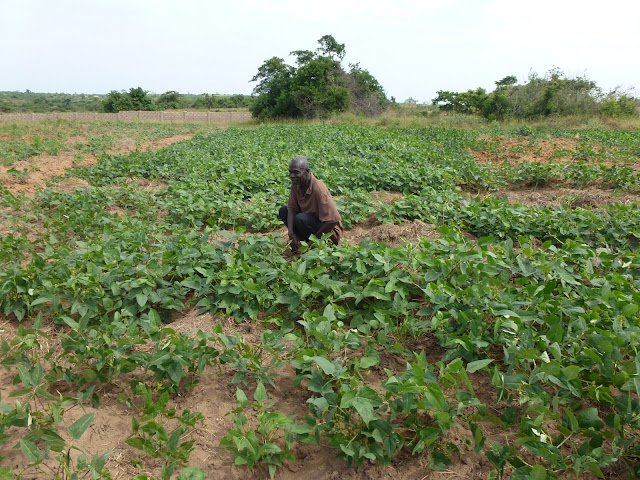 |
| This is Justice. Part of the farm is his and about 8 acres is handled by the Church. He is a member of the church and has a cute family. They also grow black eyed beans. |
 |
| We shared our Lunch |
 |
| This is a casaba tree. |
 |
| This is a holding tank built to hold water for irrigation. |
On the way back to the village we saw some round grass and mud huts. Justice told us that the people who lived in them were Muslim. He had made friends with them and told us that we could stop and take some pictures of them. It was a treat.
 |
| Check out her beads - I commented how beautiful the bead work was - she took it off and handed it to me. We gave it back to her, but we gave her some money to make us one. I am hoping we get it. |
 |
| The little boy was very afraid of us - He is about the age of Cole |
 |
| How do you think you would feel about living in one of these and never going to school? |




























